Learn the proven method to generate keyword ideas, match the search intent, and get more conversions in a shorter time.
Stop wasting time writing about “dead” keywords that won’t bring you any traffic or are too competitive.
In this step-by-step guide, you’ll learn How to do keyword research for SEO in 5 simple steps:
- Generate Keyword Ideas
- Group keywords by search intent
- Analyze keywords data
- Analyze SERP
- Prioritize Keywords
Spot new emerging trends to finally rank higher, and faster and improve your topical authority in your target niche.
And, if you’re still wondering why keyword research is important for SEO, keep reading, you’ll find insightful tips to do keyword research for SEO that no one talks about
How to do Keyword Research: Step By Step Guide
In order to perform keyword research properly, you need the support of Keyword research tools or a keyword planner to learn about keyword metrics, search volumes, search intent, keyword difficulty, and competitors.
My favorite keyword research tools are:
- Ahrefs: Great for in-depth Keyword Research
- SemRush: Great for Beginners
- Ubersuggest: Great for those on a budget
Step 1: Generate Keyword ideas
Choose among your favorite keyword research tools and generate a list of keyword ideas.
Start with a broad search of keywords in your niche and then select 5 – 10 topic areas that can help you come up with more specific keywords.
There are three types of keywords you can focus on seed, mid-tail, and long-tail keywords:
- Seed keywords represent the core words your customers might use in their searches. These are shorter and more generic, and they have a high monthly search volume and competition.
- Mid-tail are moderately competitive key terms consisting of two to three words. These are more specific than seed keywords.
- Long-tail keywords are longer and highly specific, and users are more likely to use them as they get closer to making a purchase.
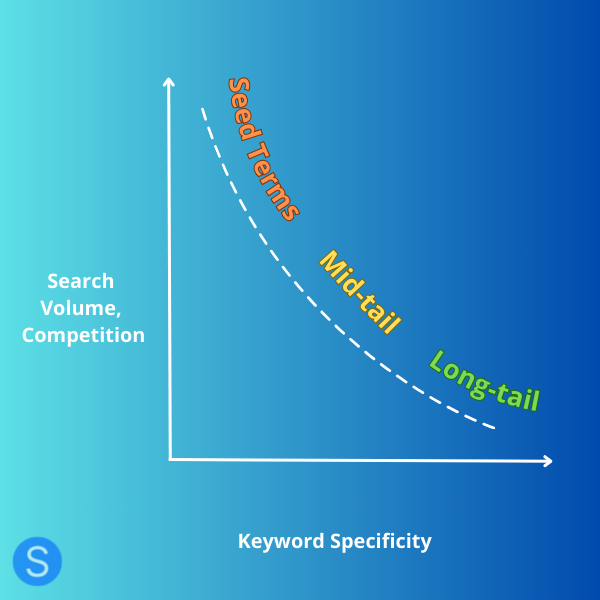
What if you’re out of keyword ideas?
Competitors analysis to find new keyword ideas
The best approach to analyze your competitor’s content strategies is to find 2-5 sites in your niche that cover a wide range of content in your niche.
Take a look at what they are doing and identify potential opportunities by examining the keywords they use.
The goal is to gain insights into their keyword strategy and identify potential opportunities for yourself.
In order to check what your competitors are ranking for, use keyword research tools like Ahrefs.
Go to the Site Explorer Section and type in the website you want to check.
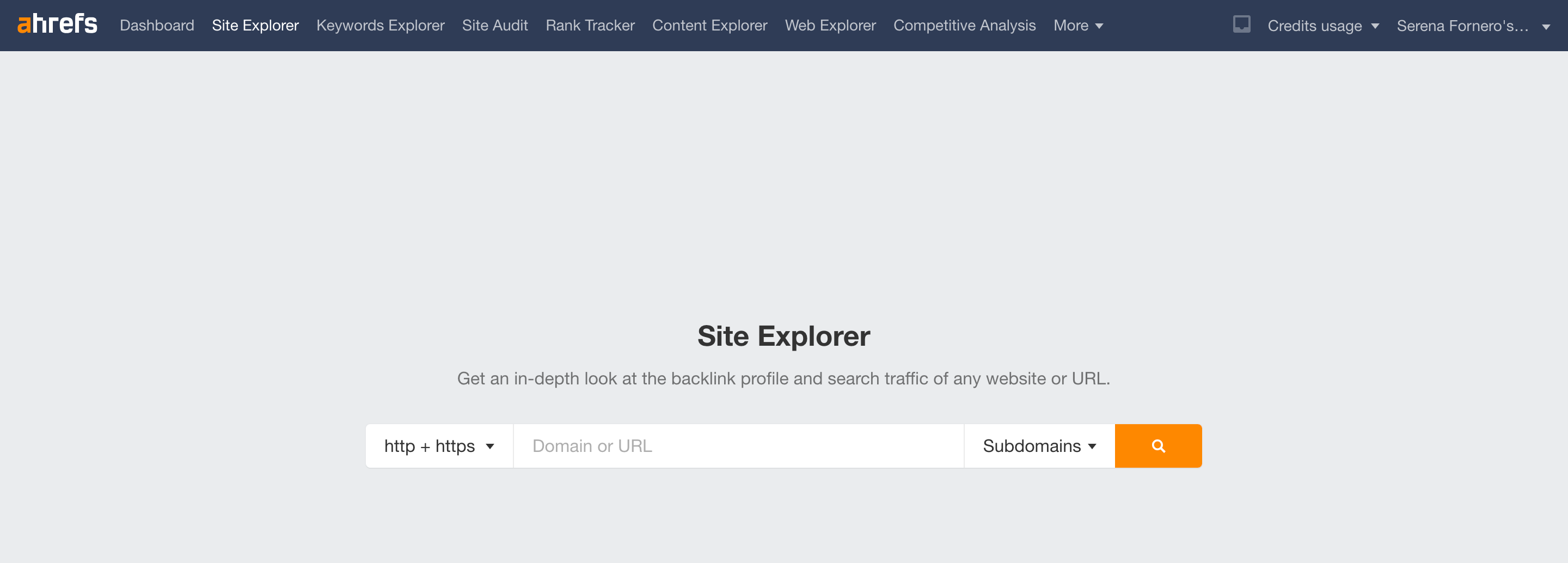
You’ll gain many insightful information about your competitor, like backlink profile and UR strength.
But you can also explore their top-ranking pages and organic keywords and check the content gap.

Here, the goal is to get inspired by your competitors and explore topics you might not have thought about.
Step 2: Group them by Search Intent
When it comes to keyword research, one important step is to group your chosen keywords by search intent.
What is search intent and how to match it?
Essentially, search intent refers to the reason behind why someone types a specific query into a search engine.
This intent can be broken down into four main categories: informational, navigational, commercial, and transactional.
- Informational queries, users are seeking general knowledge on a particular topic. For example “What is keyword research”
- Navigational queries indicate the user has a specific destination they want to reach. For example “SurferSEO”
- Commercial queries are where the user gathers information on something they intend to purchase. For example “Best On-page SEO tools”
- Transactional queries show the user is ready to make a purchase. For example “SurferSEO promo code”
This means that you can filter your long list of keywords, and identify which ones reflect specific user intent.
To filter them use keywords modifiers, so you can ensure only keywords with a certain search intent appear.
In the example below, I filtered down the long list of keywords by specific keyword modifiers so the tool will only show a smaller list of terms containing “how to” and “best”.
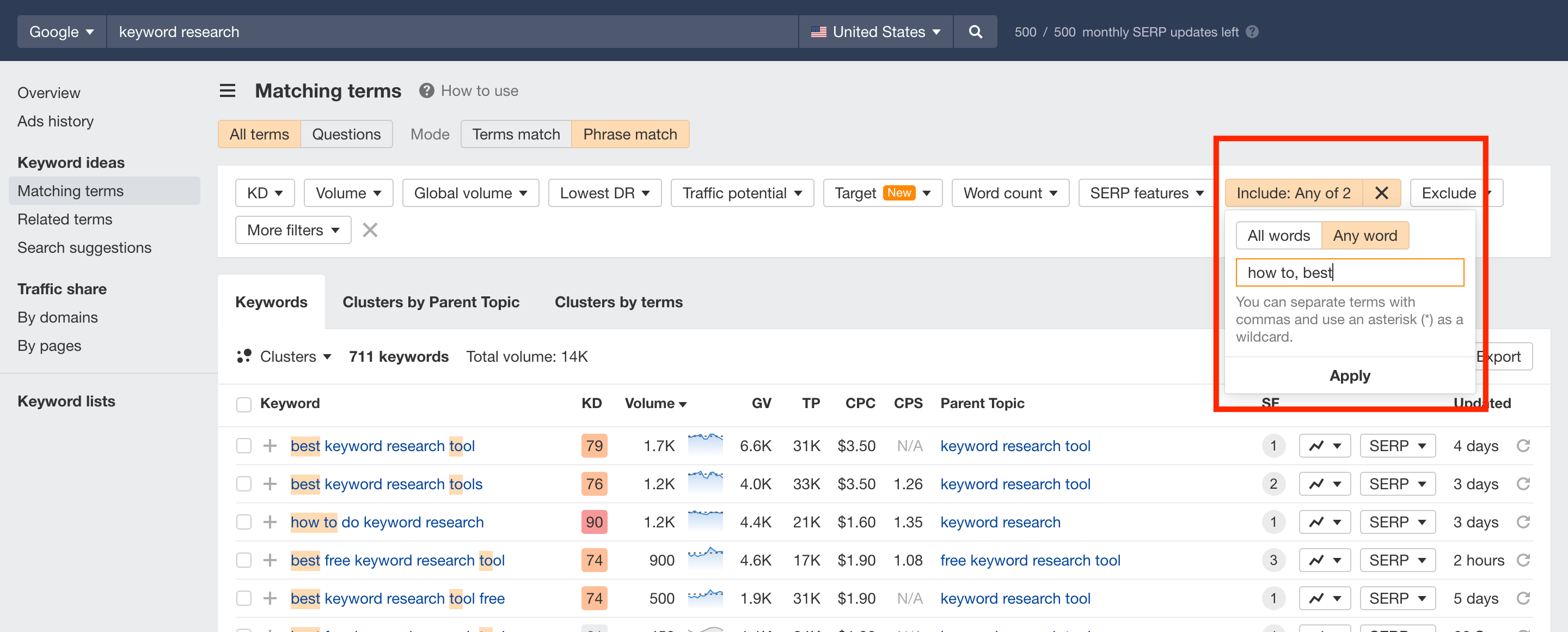
A keyword modifier is a word, or group of words, that you can add to your core keyword to make it more specific and targeted. For example, you can use “best” + “keyword” + “year”.
Example of keyword modifiers to determine the search intent of a keyword:
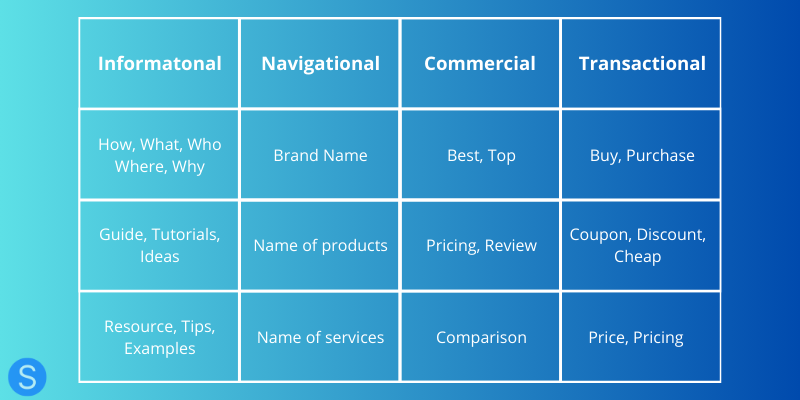
Use keyword modifiers to play around with keywords, you might find new opportunities and emerging trends.
Step 3: Analyze Keywords Data
After narrowing down your list of keywords by intent, you can filter it further by analyzing specific keyword data:
- Keyword Difficulty (KD)
- Monthly Search Volume
- Trends
- Competitors
Set a keyword difficulty
Filter your remaining keywords by difficulty, in order to target only the keywords you have an actual chance to rank for.
Under the keyword ideas section set a feasible KD, sually, the maximum difficulty to set is chosen based on your authority domain score.
Especially at the beginning, if you target keywords with a high KD, it will be difficult to make it to the top 10 results of the search engine.
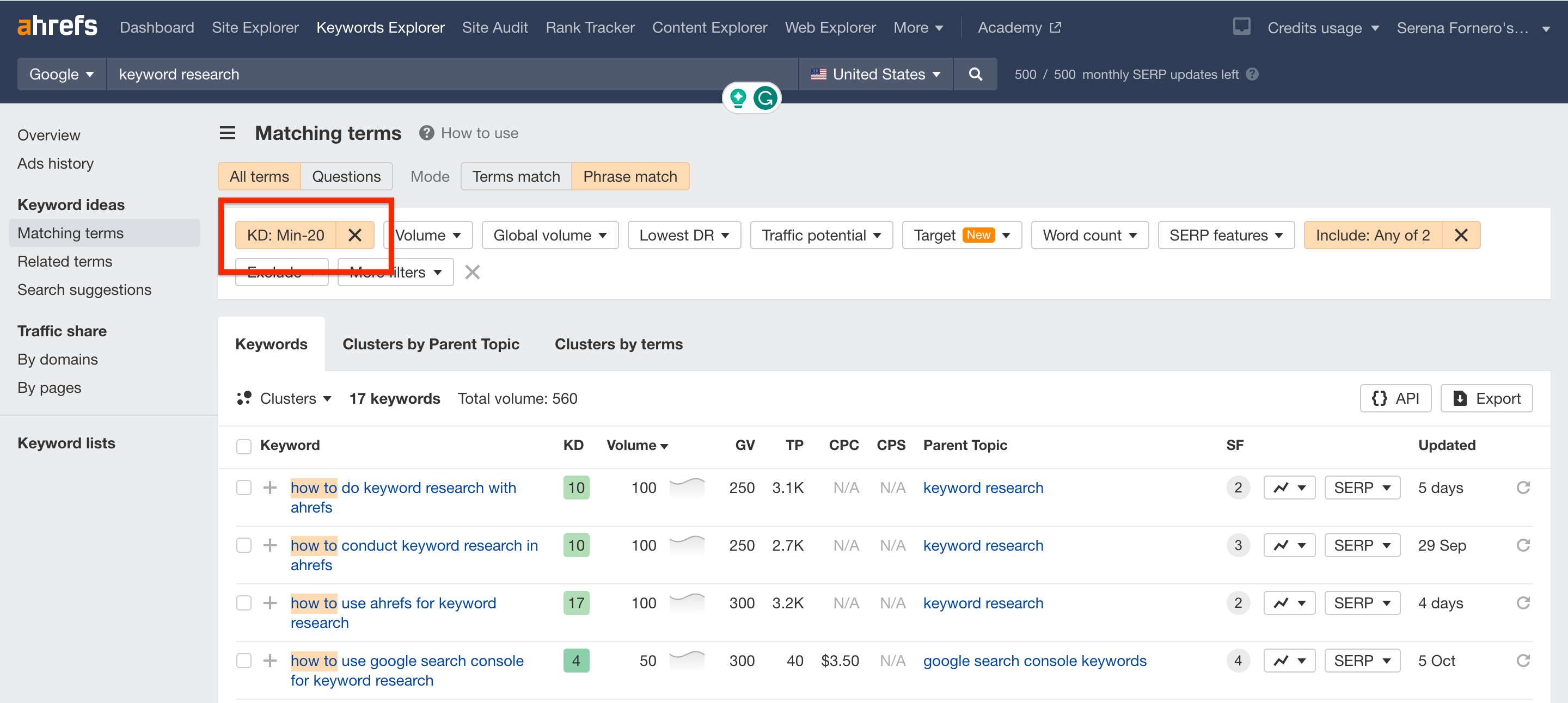
Set a search volume range
Another useful metric to look at is the monthly search volume.
Target keywords that can actually bring you traffic, usually the sweet spot is around a monthly search of 500 up.
Whereas, low volume keywords (30/40 of monthly search volume) are too obscure and probably it’s not worth even considering it.
A keyword might seem appealing, but if it’s not searched enough it might not be worth your time writing about it.
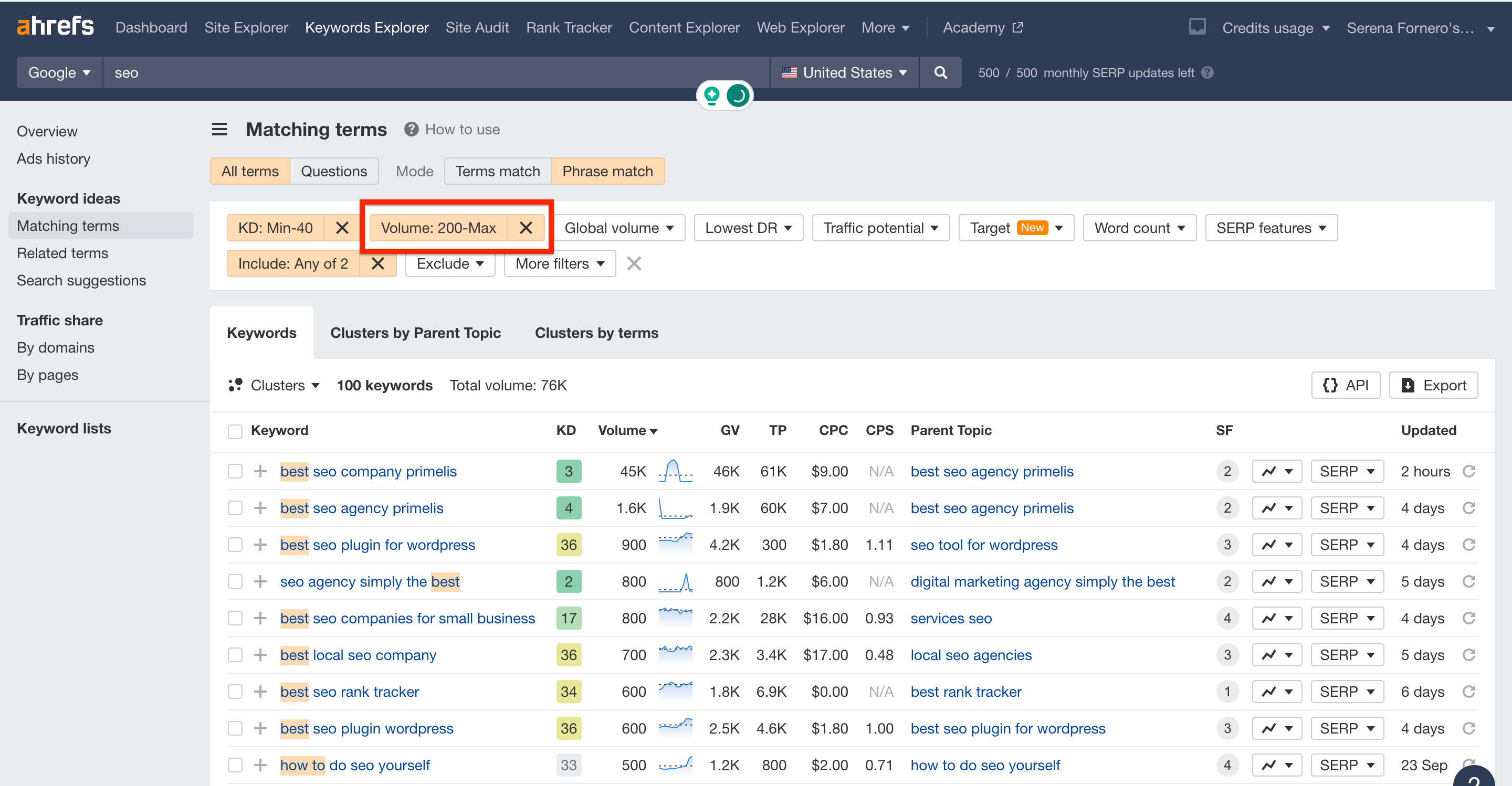
Keep an eye on trends
To achieve better rankings, it is crucial to consider the timing of keywords.
The goal is to hit the pick of the trend.
Writing about outdated or declining trends can make it challenging to rank, whereas, if you target an emerging keyword you can establish in the SERP for a long time.
Check out these three examples of trends:
The keyword in the example below is trending very well, its search volume is growing day to day. This might be the right time to write about it.
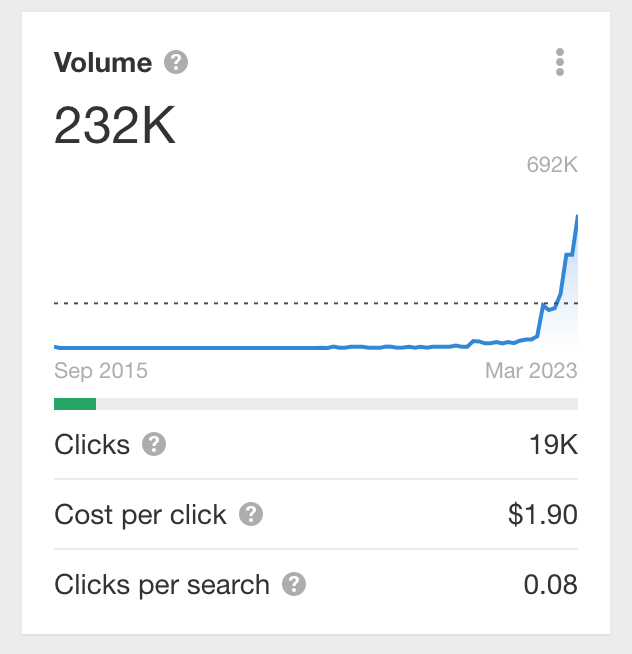
Here the keyword has lost traffic over time, it’s outdated and very difficult to rank for.
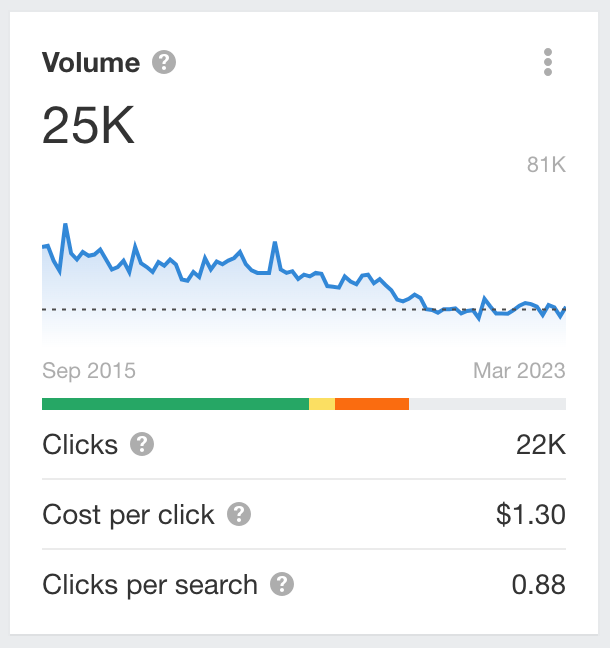
Whereas, here the keyword hit a pick in the last few months and now it’s going down again.
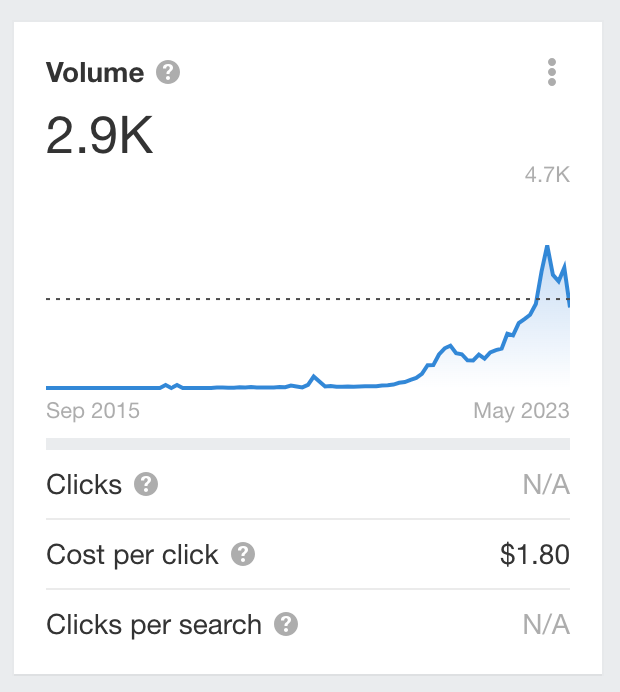
How can yuo spot new trends?
- Google Trends: a free tool that helps you figure out how often people are searching for specific things on Google.
- Innovation in your niche: Think about new products or services in your niche.
Test your Competition
With the help of keyword research tools and search engines like Google, you can learn what your competitors are doing and gain valuable information for your content strategy.
Position History
Check the position history and see if only the same websites dominate the top 10 results.
If there are no new websites breaking through, it could be tough for newcomers to gain visibility.
In the example below, see how the websites that dominate the SERP change continuously, leaving room for new websites to rank in the first positions.
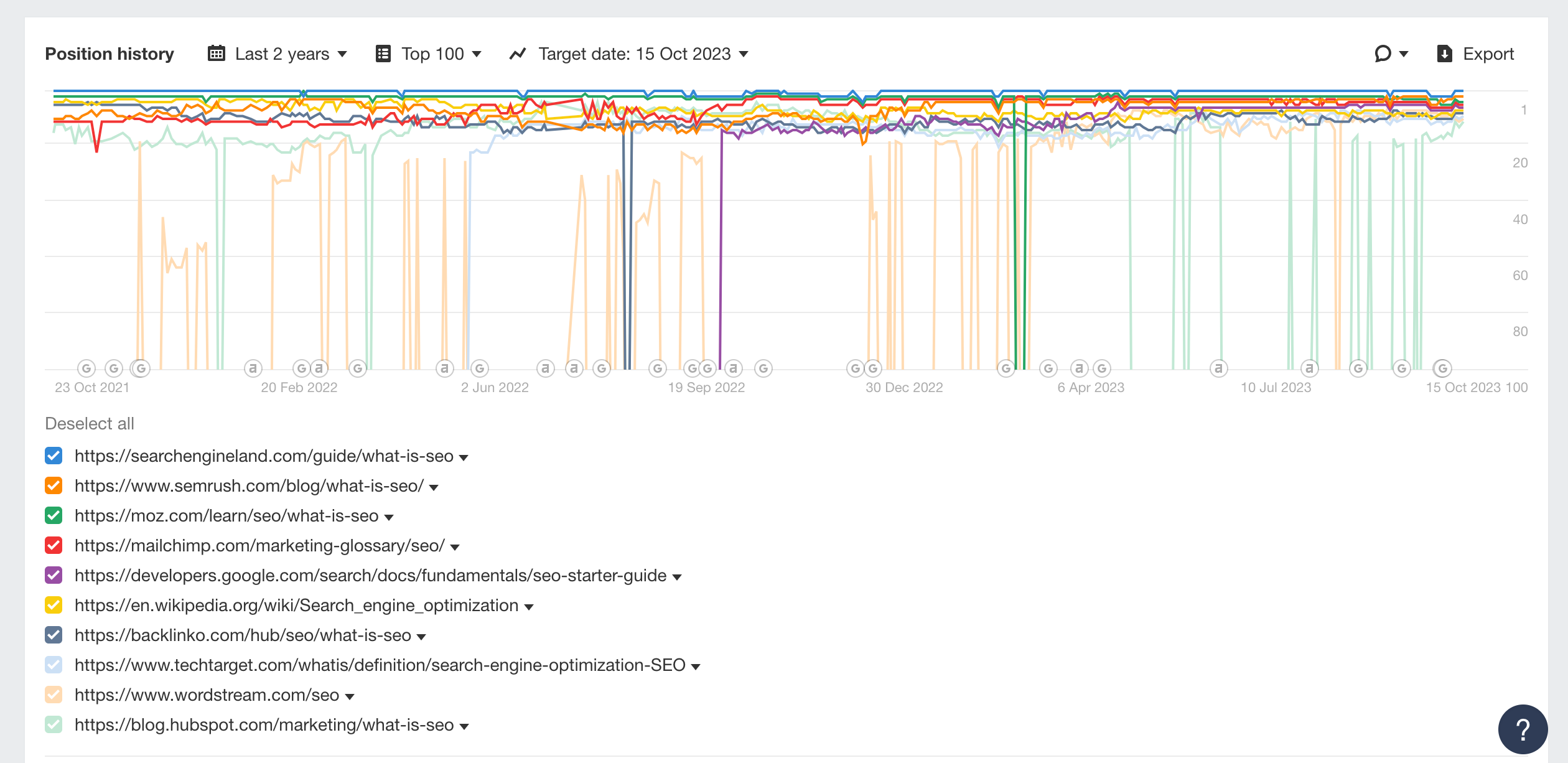
During your keyword research process, check the position history metric to make sure that the keyword yuo’re targeting is not saturated.
SERP Overview
Explore the search engine results page (SERP) and pay attention to the Domain Rating (DR) and UR (URL Rating) of the top 10 sites.
Simply analyzing the keyword difficulty won’t cut it – you need to go deeper.
See if competing requires building a massive amount of links or having a super high DR.
In the example below, you can see that the ranking websites have a high DR, and some of them have a lot of backlinks to support their article.
This means that especially if you’re just starting out, ranking for this specific keyword might be very difficult, if not impossible.
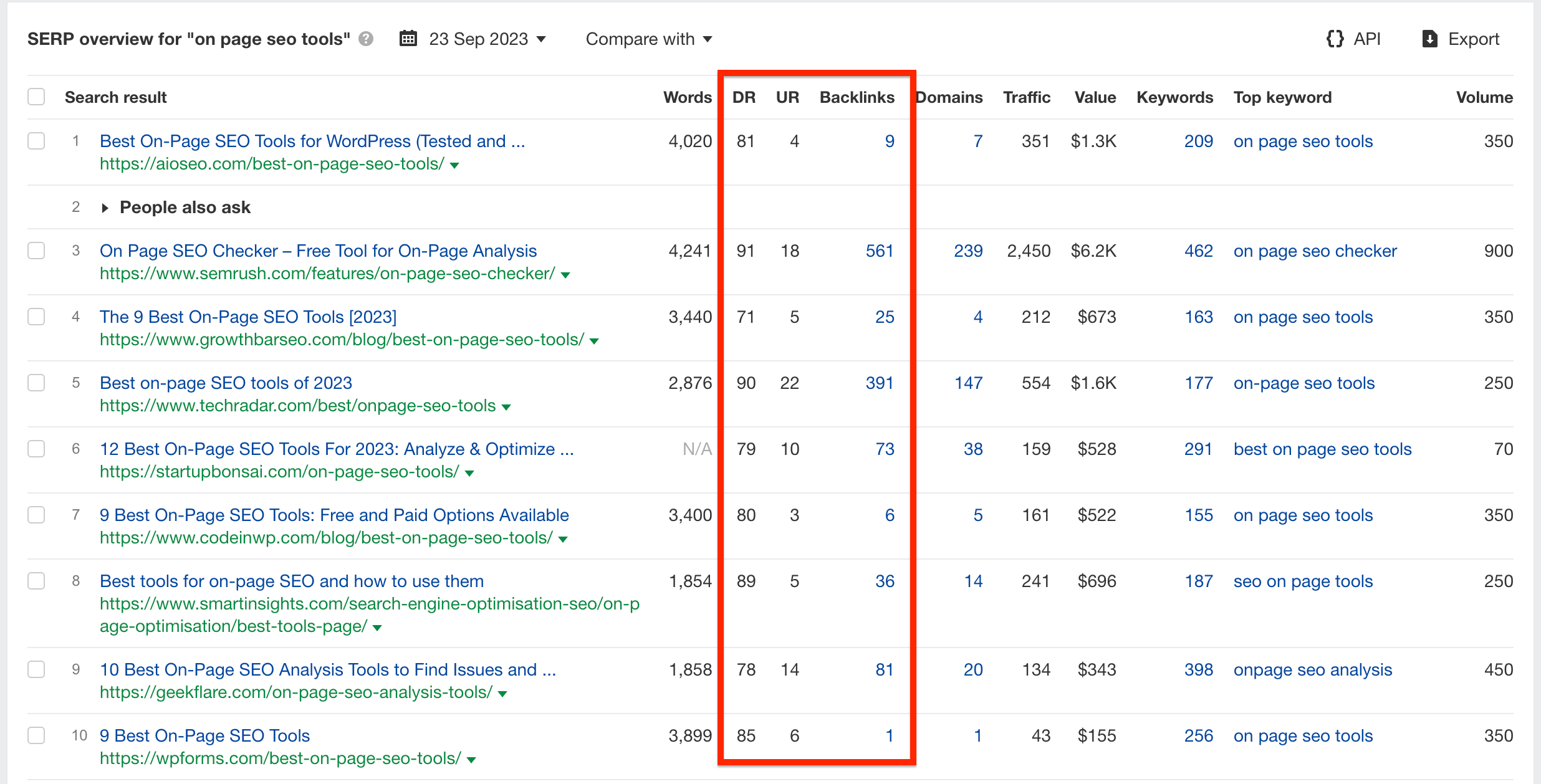
Is there a perfect ratio of informational and transactional content?
What is most important for Google is that the content you publish is good quality content for readers, that’s why it’s more likely to prefer informational blog posts instead of transactional ones.
Research has shown that the ideal balance, when starting your blog, is 40% of transactional posts and 60% informational.
If you follow this golden rule Google will keep ranking your blog posts and you’ll still make money.
Step 4: Analyze the SERP
Spend some time analyzing the first 10 results that appear in the search engines to see what your competitors are doing in order to be on the first page of Google.
The key is to replicate exactly what your competitors are doing and ensure you’re offering exactly what users are searching for.
Don’t go off topic – Google already knows what users want and delivering anything else won’t help you rank.
Imagine you’re new to the world of online marketing and you’re curious about “what is SEO.” You want to understand the basics.
When you search for this on Google, you find articles that explain Search Engine Optimization in simple terms – what it is and why it’s important.
These articles don’t talk about complicated stuff like specific tools or advanced techniques, even if SEO tools or link-building techniques are strictly related to SEO.
Why? Because when people are searching for “what is SEO,” they’re usually beginners.
They’re trying to grasp the basic idea of SEO and its significance. They might not even know about the SEO strategy or advanced tools yet.
They just want to understand the fundamental concepts.
Now, if you’re reading an article titled “What is SEO” and suddenly it starts talking about complex SEO tools, you might get confused and leave the page.
Understand the Marketing Funnel to Create Better Content
Imagine the marketing funnel as a journey that a potential customer takes before making a purchase.
It’s like guiding them through stages, from getting to know your product (ToFu – Top of the Funnel), to considering it (MoFu – Middle of the Funnel), and finally, deciding to buy (BoFu – Bottom of the Funnel).
Understanding where users are in the marketing funnel (ToFu, MoFu, or BoFu) is essential for effective keyword research because it helps you tailor your content and keywords to match what users are looking for at different stages.
- Relevance: By targeting the right funnel stage with your keywords, you ensure that your content is relevant to users’ needs and intentions.
- Engagement: Tailoring your content to user intent keeps visitors engaged. Someone in the ToFu stage may leave if they find detailed product information (BoFu) instead of introductory content.
- Conversion: Matching the user’s intent increases the likelihood of conversion. Providing the right information at the right stage can influence a user’s decision-making process positively.
Step 5: Prioritize keywords
Finally, the last step of keyword research is prioritization.
Create your final keyword list and prioritize them in terms of how much time you have to spend writing the article, how relevant is a specific keyword for your business, and what is trending.
What is keyword research?
If you’re new to the world of keyword research for SEO, you may have some questions about how it all works.
Keyword research involves identifying and analyzing the words and phrases people use when searching for information on search engines.
This information is used to optimize a website or content to improve its visibility and relevance to search engines.
Why is keyword research important?
Keyword research is vital because it enables you to optimize your website content.
By using the right keywords, you increase the chances of your website appearing in search engine results when people search for products, services, or information related to your business.
It enhances your visibility, attracts relevant traffic, and improves your chances of conversions.
Frequently Asked Questions
What types of keywords exist?
There are several types of keywords used in SEO:
- Seed Keywords: Basic, one-word keywords.
- Keywords by Search Intent: Keywords based on the user’s search intent, like informational, transactional, or navigational queries.
- Long-Tail Keywords: Specific and longer phrases, catering to a niche audience. They can be either topical or supporting keywords.
- Low-Competition Keywords: Keywords with less competition, making it easier to rank for.
- Niche Keywords: Keywords tailored to a specific industry, product, or service.
What is an advanced keyword research method?
An advanced method involves using advanced techniques like Keyword Opposition to Benefit (KOB) Analysis.
KOB Analysis can be done by using keyword research tools and focuses on identifying exactly which keywords to prioritize and build an ad hoc content strategy for your own blog or for a client.
The ultimate goal here is to build a seo strategy with only relevant keywords for your business.
How to find the best keywords?
To find the best keywords for your niche, you can do a few things:
- Group relevant keywords or key phrases by topic: This means organizing keywords into related groups. For example, if your niche is “healthy cooking,” group keywords such as “low-calorie recipes,” “vegan meals,” and “gluten-free meals.”
- Check the search intent behind each keyword: understand what users are looking for when they search for a keyword. For example, the keyword “buy vegan protein powder” indicates a transactional search intent, i.e., the user wants to make a purchase, while “benefits of vegan protein powder” indicates an informational search intent, where the user is only looking for information.
- Analyze keyword data: Use keyword research tools such as Ahrefs, Semrush or SERanking to assess search volume, keyword difficulty, competition and trends for each keyword. For example, Ahrefs can show you the monthly search frequency of the keyword “low-calorie recipes,” its competitiveness, and related keyword suggestions.






[…] way, avoiding keyword stuffing and focusing on providing valuable information to users.Conducting keyword research and understanding what your audience searches for helps you optimize your content with relevant […]
[…] Keyword Research: Start by identifying a relevant keyword or key phrase for your content. This should be a query […]
[…] Analysis is a powerful method to research keywords with high returns in a short period of […]
[…] Do keyword research to see if there are any opportunities to compete for a keyword […]
[…] by conducting keyword research to find the words and phrases that people enter in the search engines to find information, […]
[…] how to do keyword research in 5 […]